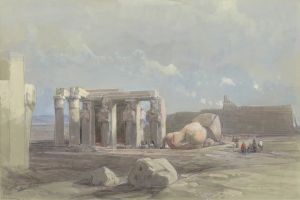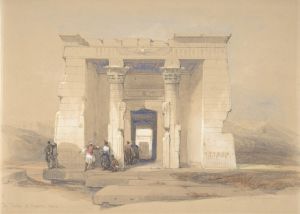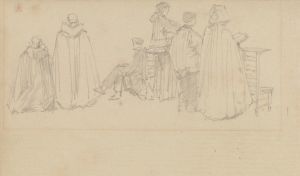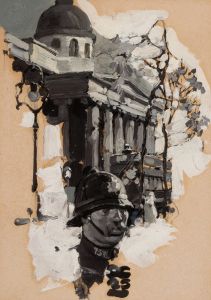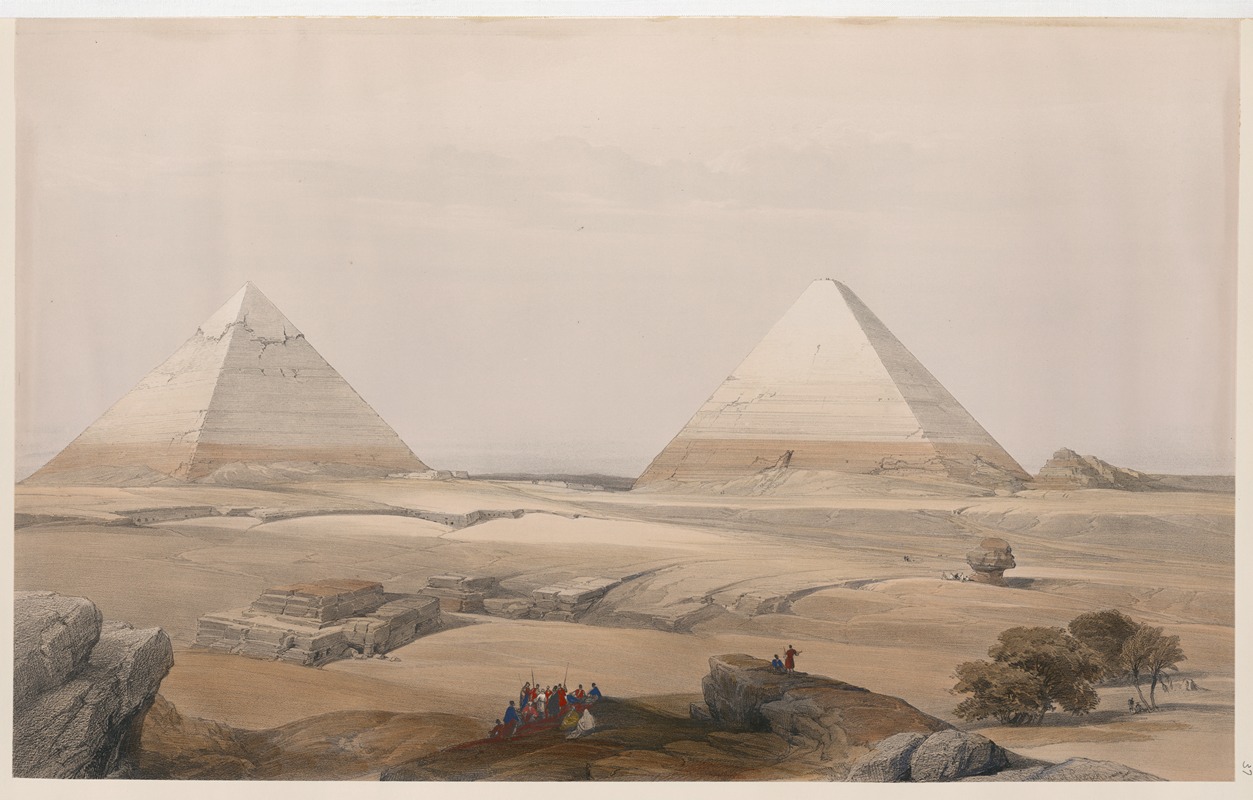
Pyramids of Geezeh [Giza].
A hand-painted replica of David Roberts’s masterpiece Pyramids of Geezeh [Giza]., meticulously crafted by professional artists to capture the true essence of the original. Each piece is created with museum-quality canvas and rare mineral pigments, carefully painted by experienced artists with delicate brushstrokes and rich, layered colors to perfectly recreate the texture of the original artwork. Unlike machine-printed reproductions, this hand-painted version brings the painting to life, infused with the artist’s emotions and skill in every stroke. Whether for personal collection or home decoration, it instantly elevates the artistic atmosphere of any space.
David Roberts' painting "Pyramids of Geezeh" is a notable work that captures the grandeur and historical significance of the Giza pyramid complex in Egypt. David Roberts, a Scottish painter born in 1796, is renowned for his detailed and romanticized depictions of architectural and historical sites, particularly in the Middle East and North Africa. His works are celebrated for their accuracy and attention to detail, which were achieved through extensive travels and on-site sketches.
The painting "Pyramids of Geezeh" is part of Roberts' larger body of work that resulted from his journey to Egypt and the Holy Land between 1838 and 1839. During this expedition, Roberts created numerous sketches and studies that he later transformed into lithographs and paintings. These works were published in a series titled "The Holy Land, Syria, Idumea, Arabia, Egypt, and Nubia," which gained significant acclaim and contributed to the Western fascination with the Orient during the 19th century.
In "Pyramids of Geezeh," Roberts depicts the iconic pyramids of Giza, which include the Great Pyramid of Khufu, the Pyramid of Khafre, and the Pyramid of Menkaure. These ancient structures are among the most famous and enduring symbols of ancient Egypt, dating back to the Fourth Dynasty of the Old Kingdom, around 2580–2560 BCE. The pyramids served as monumental tombs for the pharaohs and are considered architectural marvels due to their precise construction and massive scale.
Roberts' painting captures the pyramids from a vantage point that emphasizes their imposing size and the stark contrast between the ancient structures and the surrounding desert landscape. The use of light and shadow in the painting highlights the geometric precision of the pyramids and adds a sense of depth and realism to the scene. Roberts' attention to detail is evident in the rendering of the stone blocks and the subtle variations in color that suggest the weathering of the ancient stones.
The painting also includes figures in the foreground, which provide a sense of scale and human presence. These figures, often depicted in traditional Egyptian attire, add a narrative element to the composition and reflect Roberts' interest in the people and cultures he encountered during his travels. The inclusion of these figures serves to bridge the gap between the ancient past and the contemporary world of Roberts' time.
David Roberts' work, including "Pyramids of Geezeh," played a significant role in shaping Western perceptions of the Middle East and contributed to the 19th-century Orientalist movement in art. His paintings and lithographs remain valuable historical records of the sites he visited and continue to be appreciated for their artistic merit and documentary value.
Overall, "Pyramids of Geezeh" exemplifies Roberts' skill in capturing the majesty and mystery of ancient Egypt, offering viewers a glimpse into a world that has fascinated historians, archaeologists, and artists for centuries.





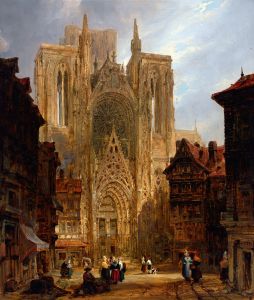
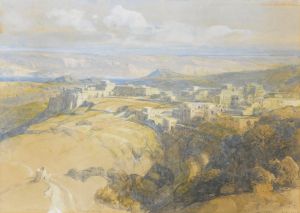


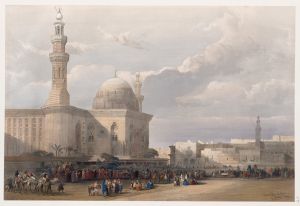
![Temple of Kalabshee [Kalabsha, Kalâbishah], Nubia. Nov. 1838.](/imgs/217548/s/david-roberts-temple-of-kalabshee-kalabsha-kalabishah-nubia-nov-1838-be0ac440.jpg)
![Temple of Wady Saboua [Wadi al-Sabua], Nubia.](/imgs/217551/s/david-roberts-temple-of-wady-saboua-wadi-alsabua-nubia-52e62db.jpg)
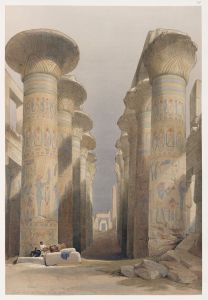
![View on the Nile looking towards the pyramids of Dashour [Dahshûr]and Saccara [Saqqârah].](/imgs/217572/s/david-roberts-view-on-the-nile-looking-towards-the-pyramids-of-dashour-dahshurand-saccara-saqqarah-6cb692fe.jpg)

